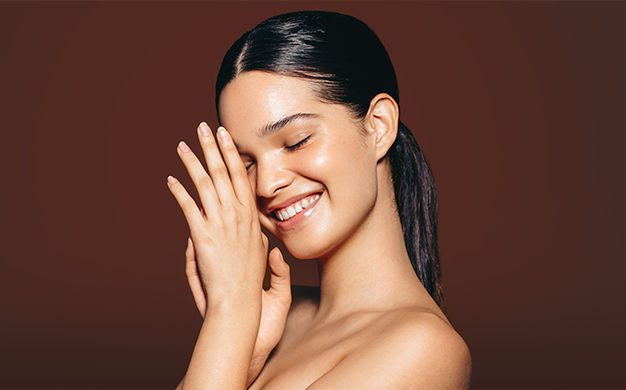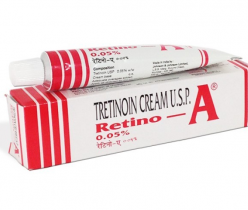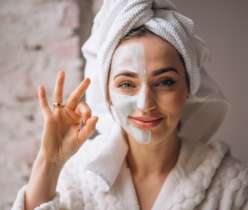Retinol is the go-to ingredient for dermatologists and skin enthusiasts, but it often leaves newbies puzzled. First, it is important to know retinol refers to retinoids. This is derived from vitamin A; tretinoin is the most widely used retinoid. Tretinoin comes in various forms, each with different strengths; for example, retin a 0.05, retin 0.025, and retino a 0.025, retino a 0.05 cream among the strongest prescription retinoids. These are available as a prescription-level treatment for both acne and skin ageing concerns.
Other retinoids follow in descending order of potency: retinaldehyde, retinol, and retinol esters. When retinoids are used properly, they are unrivalled multitaskers, known for their ability to diminish signs of ageing, increase skin cell turnover, stimulate the production of collagen and elastin, improve skin tone by reducing hyperpigmentation, and even tackle acne and blemishes.
How does retinol or retin works?
When retino a tretinoin cream is applied to the skin, it gets absorbed and engages with special receptors. These receptors activate and ignite a sequence that sparks collagen production and increases cell turnover. Imagine collagen as the springboard for a plumber, a more supple complexion, reducing fine lines and wrinkles. Retino A cream also helps shed tired skin cells, unveiling a fresher face that glows. The antioxidants of retin 0.5, retino a 0.05, and other retinoid properties zap free radicals known to hasten ageing and skin damage. It’s your best ally or best friend in the quest to find clearer, acne-free skin. But it is important to know that you always start with milder concentrations and gradually work your way up, allowing your skin to adapt to that goodness.
What does Retino A target?
Retino A is very efficient in treating various skin concerns. This is effective in the treatment of many skin problems. Common Retino A cream uses are given below:
-
- Clogged pores – Retino A cream 0.05 is effective in increasing skin turnover, which helps keep your pores clean. It helps in the treatment of acne and minimizing open pores.
- Inflammation – It targets acne scars and skin conditions like psoriasis by slowing skin overgrowth and reducing inflammation.
- Sagging skin – It helps slow down collagen breakdown and makes skin more elastic. This leads to youthful skin with no sign of lines. So, one can consider it even as the best anti-wrinkle cream.
The best way to use Retino A
One of the negative points related to incorporating retino cream in the daily is going through a “retinol purge.” It’s a normal occurrence and nothing to worry about. For the uninitiated, a retinol purge is when the skin starts reddening or flaking due to irritation and sensitivity. But for the best benefits, physicians have created an information guide to help you navigate the tricky waters of novice retinol users.
-
- Slow and steady: use the lowest concentration to allow your skin to adjust gradually and move up once you’ve fully adjusted to the intensity. This helps minimize potential sensitivity or irritation.
- Patch test: Do a patch test on a small skin area to know its effects on your skin. This can help in identifying any adverse reactions or allergies.
- Hydrate: moisturize and hydrate your skin, which helps lessen any potential dryness or irritation associated with retinoid use.
- Sun protection: protect your skin from sun rays by applying sunscreens, which is important as retinol can make your skin more vulnerable to sun damage. Apply the best eye cream for dark circles to get rid of dark circles.
Side effects
Retinol shows some side effects when used in high concentration, and they are as follows—
-
- Dryness
- Peeling
- Increased sensitivity to the sun
To avoid any adverse effects, use it only twice a week and choose a formulation with the lowest concentration. Increase the concentration and application frequency only after your skin has adapted to retinol. Apply this best wrinkle cream at night and use a moisturizer with the retino A. During the day, apply sunscreen along with the Retin 0.05 to avoid sunburn. Hyaluronic acid and niacinamide work best with retinol as they provide ample hydration and soothe and repair your skin’s barrier.
Precautions
-
- People with skin diseases like rosacea or eczema should avoid Retino A 0.025, and it would be important to consult your dermatologist before starting a tretinoin formulation.
- Pregnant and lactating should avoid using retinol.
- Hydrate your skin properly.
- If your skin is very sensitive, apply it weekly.
- Avoid sunlight.
- Use moisturizer.
- Apply the best anti-wrinkle eye cream to prevent the development of dark circles.
- Be patient, as it may take time to show its effect.
- When using retinol, avoid actives like benzoyl peroxide, sulphur, salicylic acid, vitamin C, benzoyl peroxide, and AHA/BHA acids. These products can increase irritation and decrease retinol’s efficacy.




